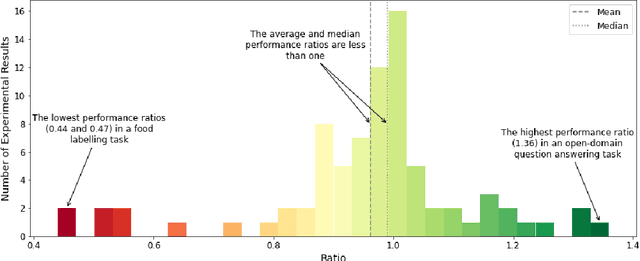Michelle Vaccaro
Advancing AI Negotiations: New Theory and Evidence from a Large-Scale Autonomous Negotiations Competition
Mar 09, 2025Abstract:Despite the rapid proliferation of artificial intelligence (AI) negotiation agents, there has been limited integration of computer science research and established negotiation theory to develop new theories of AI negotiation. To bridge this gap, we conducted an International AI Negotiations Competition in which participants iteratively designed and refined prompts for large language model (LLM) negotiation agents. We then facilitated over 120,000 negotiations between these agents across multiple scenarios with diverse characteristics and objectives. Our findings revealed that fundamental principles from established human-human negotiation theory remain crucial in AI-AI negotiations. Specifically, agents exhibiting high warmth fostered higher counterpart subjective value and reached deals more frequently, which enabled them to create and claim more value in integrative settings. However, conditional on reaching a deal, warm agents claimed less value while dominant agents claimed more value. These results align with classic negotiation theory emphasizing relationship-building, assertiveness, and preparation. Our analysis also revealed unique dynamics in AI-AI negotiations not fully explained by negotiation theory, particularly regarding the effectiveness of AI-specific strategies like chain-of-thought reasoning and prompt injection. The agent that won our competition implemented an approach that blended traditional negotiation preparation frameworks with AI-specific methods. Together, these results suggest the importance of establishing a new theory of AI negotiations that integrates established negotiation theory with AI-specific strategies to optimize agent performance. Our research suggests this new theory must account for the unique characteristics of autonomous agents and establish the conditions under which traditional negotiation theory applies in automated settings.
When Are Combinations of Humans and AI Useful?
May 09, 2024Abstract:Inspired by the increasing use of AI to augment humans, researchers have studied human-AI systems involving different tasks, systems, and populations. Despite such a large body of work, we lack a broad conceptual understanding of when combinations of humans and AI are better than either alone. Here, we addressed this question by conducting a meta-analysis of over 100 recent experimental studies reporting over 300 effect sizes. First, we found that, on average, human-AI combinations performed significantly worse than the best of humans or AI alone. Second, we found performance losses in tasks that involved making decisions and significantly greater gains in tasks that involved creating content. Finally, when humans outperformed AI alone, we found performance gains in the combination, but when the AI outperformed humans alone we found losses. These findings highlight the heterogeneity of the effects of human-AI collaboration and point to promising avenues for improving human-AI systems.
A Test for Evaluating Performance in Human-Computer Systems
Jun 28, 2022



Abstract:The Turing test for comparing computer performance to that of humans is well known, but, surprisingly, there is no widely used test for comparing how much better human-computer systems perform relative to humans alone, computers alone, or other baselines. Here, we show how to perform such a test using the ratio of means as a measure of effect size. Then we demonstrate the use of this test in three ways. First, in an analysis of 79 recently published experimental results, we find that, surprisingly, over half of the studies find a decrease in performance, the mean and median ratios of performance improvement are both approximately 1 (corresponding to no improvement at all), and the maximum ratio is 1.36 (a 36% improvement). Second, we experimentally investigate whether a higher performance improvement ratio is obtained when 100 human programmers generate software using GPT-3, a massive, state-of-the-art AI system. In this case, we find a speed improvement ratio of 1.27 (a 27% improvement). Finally, we find that 50 human non-programmers using GPT-3 can perform the task about as well as--and less expensively than--the human programmers. In this case, neither the non-programmers nor the computer would have been able to perform the task alone, so this is an example of a very strong form of human-computer synergy.
 Add to Chrome
Add to Chrome Add to Firefox
Add to Firefox Add to Edge
Add to Edge